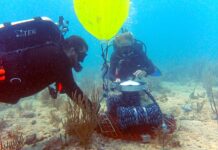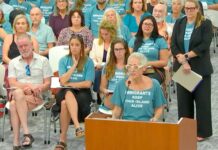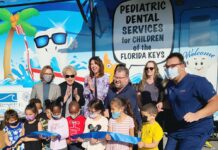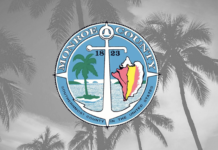Incoming Superintendent Theresa Axford says a broad group with representatives from the school district, the health department and members of the community have come up with a plan to serve Keys kids in three different coronavirus scenarios: minimal exposure in the community, moderate exposure and substantial exposure. Students in the Monroe County School District are scheduled return to school on Aug. 13.
“None of us can accurately predict what will happen with the Covid-19 virus between now and the opening of school in August,” she said. “But we have to be ready to go anyway. So, we convened a large group to look at how we will respond to each possible iteration. And by doing this as early as possible, we are able to communicate this to the rest of those affected so they can, in turn, make appropriate plans.” Axford, who will become superintendent in July, has served as the executive director of teaching and learning for the past eight years. She joined the district in 1986 as a classroom teacher.
“I know how disruptive it is for families, particularly those with small children, when schools are closed for extensive time periods,” Axford said. “During times of substantial community exposure, however, closures may be necessary.”
Her other main concern: making sure all kids, regardless of their individual circumstances, receive the best education possible to prepare them for their future.
“What we did was look at all of the ways we can safely keep as many kids in school for as many days as possible under all of the different phases of exposure. This is the best way we can serve the community and the kids,” Axford said. After that, the planning group looked at how the district can best provide a virtual education to all grade levels.
Going into the school year, the level at which schools can reopen will be determined by both the school superintendent and the local office of the Florida Department of Health.
Regardless of the level of exposure in the community, the district will be doing a number of things to reinforce safety and health. And no matter what phase of exposure the community is in, virtual learning will be available to all families and students who need or want to remain at home due to health concerns.
Some of the safety measures which are already in place and will remain:
Mask-wearing will be required at all times when social distancing is not possible. This would include on buses, when walking between classes, and at any meetings or events which don’t allow for adequate space between people.
Classrooms will be provided with adequate amounts of cleaning supplies such as soap, hand sanitizer, gloves and cleansing agents for surface cleaning.
Cleaning staff will receive training on how best to clean school facilities.
Classrooms will be rearranged to provide for more space between students. Schools will be identifying extra rooms which can be used for instruction.
Each school will review its cafeteria operations and determine how best to organize meal times safely, including staggering meal times and feeding students in their classrooms.
Informational press releases will be issued on a regular basis through local media. In addition, information will be available on the school district website, keysschools.com and on all school social media (Facebook, Twitter, Instagram). A phone number will be set up before the start of the school year. Emergency information will be conveyed using robocalls.
PLAN A
Minimal community exposure
Minimal exposure in the community is defined as isolated cases with limited community transmission and case investigations with no evidence of exposure in large community settings. Under these circumstances, all students would return to school except those whose parents choose to keep them enrolled in a virtual environment at home. The plan for this phase provides schools with guidance on how to do this safely. Some considerations include:
• Teaching smaller groups of students to ensure social distancing, which will require identifying additional classroom space and instructional staff.
• Grouping students in “cohorts” which would stay together for various activities during the school day.
• Developing schedules which allow for the minimal amount of student movement, and safe movement of students when necessary. This will include changes in cafeteria schedules and operations if necessary for safety.
PLAN B
Moderate community exposure
• This phase is defined as “sustained transmission with likelihood or confirmed exposure and potential for rapid increase in cases.”
• In this phase of exposure, elementary students in Pre-K through Grade 5 will attend face-to-face instruction every day. Class sizes will be reduced and may require schedule adjustments to ensure CDC guidelines are being followed.
• Middle school and high school students in grades 6-12 will use a schedule of alternating days to reduce numbers. These students will attend school every other day on a staggered schedule and will have virtual school on the alternating days.
• Meal service may be substantially changed to include students eating in the classroom instead of the cafeteria. Schools may also consider canceling extracurricular activities and events.
PLAN C
Substantial community exposure
• This phase is defined by large-scale community transmission.
• Schools will be closed with students self-isolating, attending full-time virtual school.
• Meal service will continue; cafeteria staff will prepare meals and transportation staff will deliver them to centralized locations throughout the Keys.






















